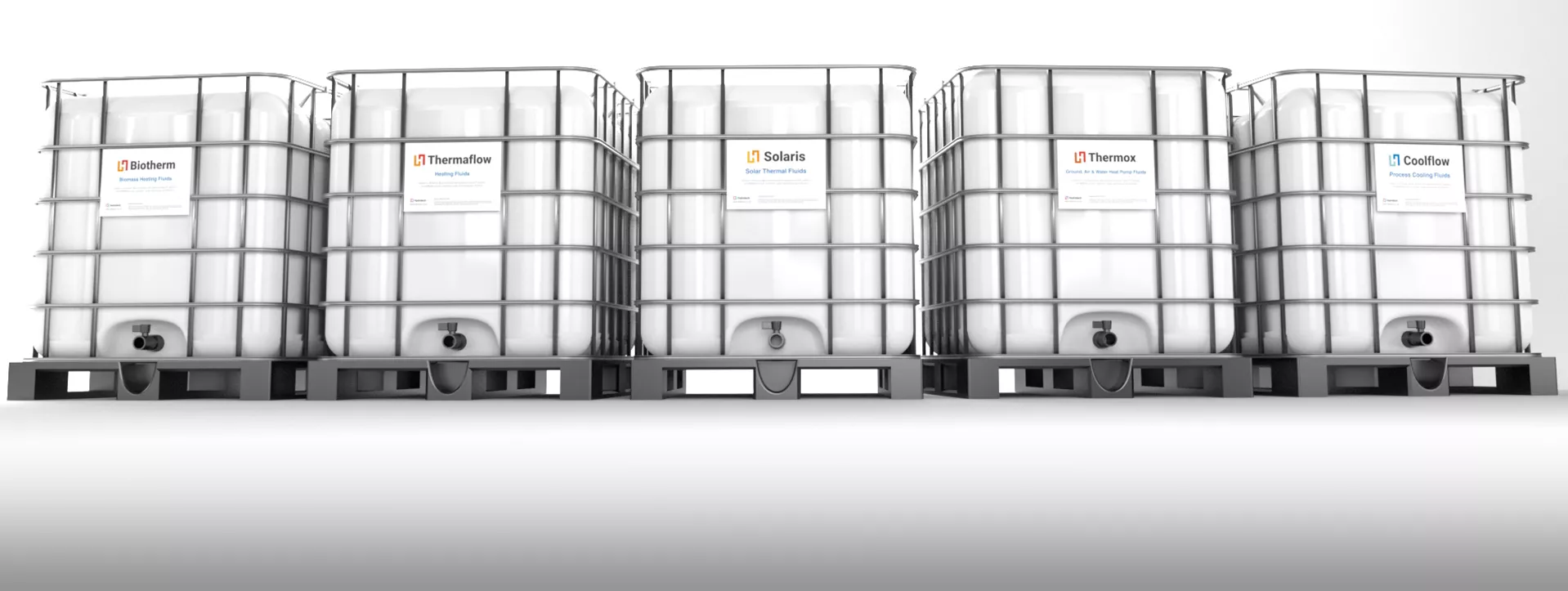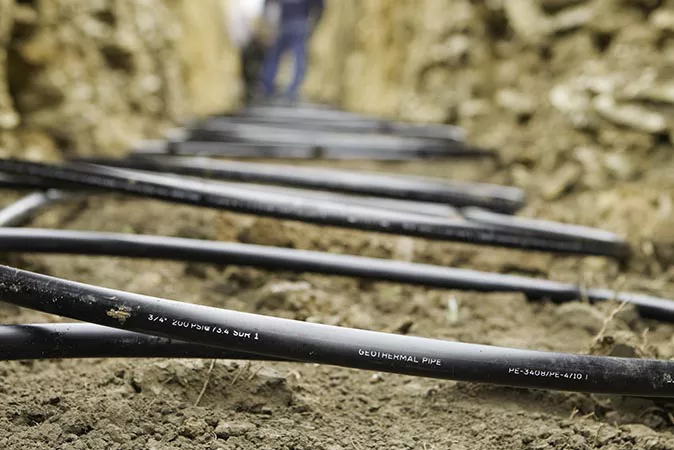Glycol & Antifreeze Products
Hydratech’s high performance glycol and antifreeze solutions are formulated to maximise CoP via a comprehensive understanding of fluid dynamics and thermodynamics.
More about Glycol & Antifreeze ProductsWhat is antifreeze?
Most antifreeze formulations are a mix of high purity water (such as deionised water) and glycol (ethylene or propylene). Multi-metal and multi-function inhibitors are also added to prevent internal corrosion, scaling and biological fouling.
Antifreeze plays two critical roles in protecting heating and cooling systems. Firstly, it lowers the freezing point of water, allowing systems to flow freely and avoid expensive freeze-ups during winter’s sub-zero temperatures. Secondly, it raises the boiling point of water to prevent any over-heating issues. The inclusion of inhibitors also plays a key part in protecting system components and pipework.
What is the difference between propylene glycol and ethylene glycol?
Ethylene glycol offers the best heat transfer rates of all glycols and is often selected ahead of propylene glycol for this reason. It is significantly less viscous than propylene glycol, especially at sub-zero temperatures - lower viscosity fluids require greater pumping-energy and therefore cost more to run. Less percentage volume of ethylene glycol is required, when mixed with water, compared with propylene glycol to achieve the same freeze-point protection.
Ethylene glycol is manufactured in much larger volumes than propylene and other glycols, subsequently the unit cost is usually lower and availability more reliable.
The main drawback associated to raw ethylene glycol is its toxicity to humans and animals. Whilst the vast majority of Safety Data Sheets declare ethylene glycol as (only) being 'Harmful', a mass of evidence exists to confirm that, relatively small amounts can prove fatal.
Ethylene glycol also has a natural tendency to degrade in the presence of oxygen. During degradation several acid by-products are formed including; glycolic, formic, acetic and oxalic acids. These acids will rapidly corrode carbon steel and other metals unless appropriate measures are taken - Ie; the availability of oxygen, pH buffering of acid by products and proactive corrosion prevention via inhibitors.
Propylene glycol was developed to replace ethylene glycol for use in food and beverage processing systems or where there is a requirement for a non-toxic classification. PG has a much lower capacity for efficient heat transfer, compared with Ethylene glycol-based mixtures - It is also much more viscous at low temperatures and thus provides more of a challenge to pump.
Coolflow DTX: The best of both worlds…
In 2010 Hydratech added Coolflow DTX to their range of process cooling fluids. DTX is a high-performance non-toxic heat transfer fluid that is based on ethylene glycol, blended with a detoxification additive.
The game-changing fluid combines the thermal efficiency and low viscosity associated to ethylene glycol, with the non-toxic rating of propylene glycol. The list of DTX adopters is now extensive and includes Arla Foods, Mϋller Dairy, Waitrose, Airbus, Siemens and BrewDog.
For more information on Hydratech’s Coolflow range of non-toxic glycols click here.

Hydratech’s high performance glycol and antifreeze solutions are formulated to maximise CoP via a comprehensive understanding of fluid dynamics and thermodynamics.
More about Glycol & Antifreeze Products

Regular analysis can extend the life of both fluid and system. Hydratech’s Fluid Monitoring Program (FMP) is a very straight forward, effective way to proactively monitor closed-loop system condition.

Hydratech’s high performance glycol and antifreeze solutions are formulated to maximise CoP via a comprehensive understanding of fluid dynamics and thermodynamics.
More about Glycol & Antifreeze Products

If you need help or advice on selecting the most suitable product for your needs call one of our sales engineers today. With experience across many industry sectors we can help you find the most cost effective solution whilst meeting all your technical re
Call today on (860) 653-1691
Sorry, we need you to complete all the required fields before we can process your enquiry.